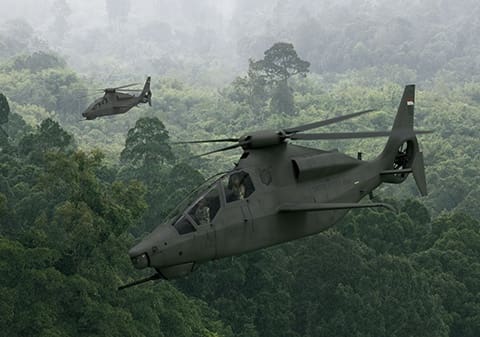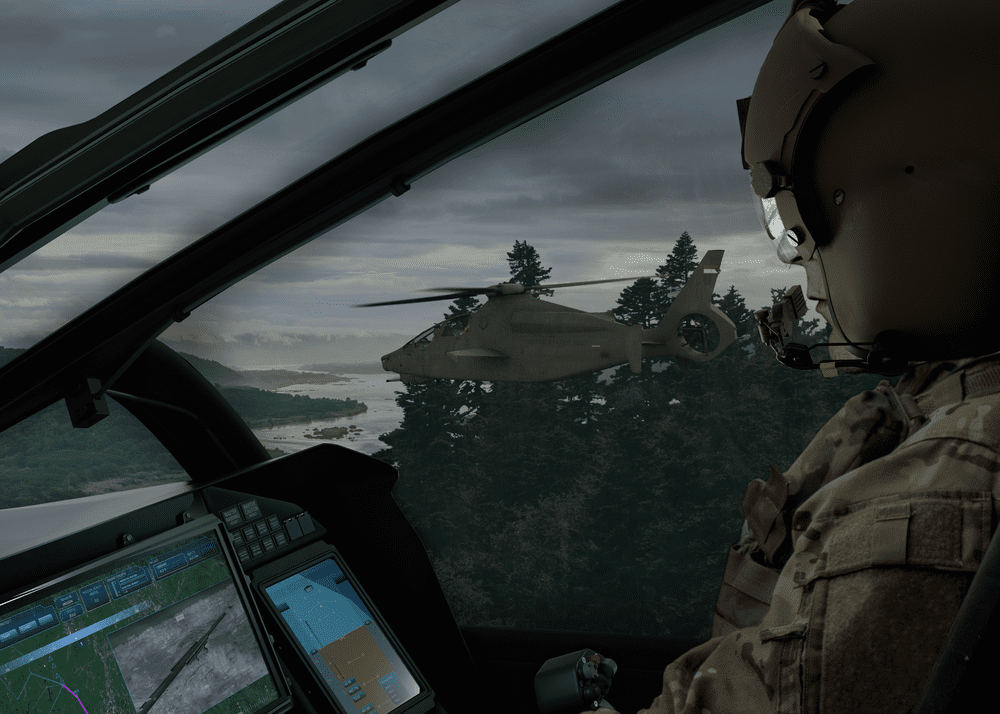Team Invictus brings together programmatic and operational expertise to deliver a transformational, affordable scout aircraft to soldiers, the Bell 360 Invictus
Fort Worth, Texas (June 4, 2020) – Bell Textron Inc., a Textron Inc. (NYSE: TXT) company, has announced agreements with nine premier aerospace industry leaders to form Team Invictus. The companies are producing the Bell 360 Invictus prototype submission as part of the U.S. Army’s Future Attack Reconnaissance Aircraft (FARA) program. Each industry partner brings unique experience and technological expertise to provide a low-risk path for the Army’s acquisition of a lethal, affordable rotorcraft with advanced mission systems to modernize aviation for multi-domain operations (MDO).

“Team Invictus is working together to show how cutting-edge technology will give soldiers the ability to confidently operate in the complex and contested battlespace of multi-domain operations,” said Chris Gehler, vice president and program director for FARA at Bell. “Future Vertical Lift is critical for the Army’s ability to win in multi-domain operations with FARA defeating defensive layers and the Future Long-Range Assault Aircraft (FLRAA) exploiting opened areas to achieve operational objectives.”
Team members are working closely together to deliver the Bell 360 Invictus prototype using a configuration that emphasizes operational availability, sustainability, and maintainability. The members of Team Invictus include:
•Astronics Corporation for a modular framework of airframe power generation, conversion, and distribution products
•Collins Aerospace for integration of a new generation of avionics hardware and software featuring cyber-hardened and digital backbone solutions to configure and integrate mission systems
•GE Aviation for the 3,000-SHP T901 engine and working on the aircraft Health Awareness System (HAS)
•ITT-Enidine Inc. for the passive Liquid Inertia Vibration Eliminator (LIVE) units for all modes of operation including high speed
•L3Harris Technologies for the WESCAM™ MX-15D, an advanced, stabilized multi-sensor, multi-spectral imaging and targeting system
•Parker Lord for rotor dampers, the main rotor CF bearing, the tail rotor tension torsion strap, and the Active Vibration Control (AVC) System
•Mecaer Aviation Group, Inc. for a fully retractable, tail dragger landing gear system
•MOOG Inc. for flight control computer (FCC) electronics, software, and flight control actuation, critical components of the Bell fly-by-wire, Flight Control System (FCS)
•TRU Simulation + Training for a high-fidelity flight simulator that gives pilots a true sense of the aircraft flight controls
Team Invictus is applying digital design and manufacturing technologies, including maintenance as part of the design process, and use of emerging commercial practices to bring a holistic view of digital models, processing and analysis to reduce lifecycle maintenance and servicing requirements—and thus reducing sustainment costs.

“Each team member brings a capability that is vital to the success of the Bell 360 and we are honored to have proven, capable, and well-respected industry partners on Team Invictus,” stated Gehler. “This is an outstanding industry team, and we are working diligently to produce a FARA weapon system that is operationally effective and affordably sustainable, as well as complementary and in many ways common to the FLRAA program.”
Following the selection of the Bell 360 Invictus for the competitive prototype in March 2020, Team Invictus continues to rapidly move forward. Team Invictus’ collective expertise reduces program risk while preserving the Army’s FARA schedule leading to a first flight targeted for the fourth quarter of fiscal 2022.
To learn more about Bell 360 Invictus and FVL, please visit the Bell 360 Invictus website, and follow us on YouTube, LinkedIn, Twitter, Facebook, and Instagram.


Comanche 2 electric boogaloo
knew i wasnt the only one thinking it
I hope the Sikorski Raider works out, with it’s stacked, counter-rotating rotors.
Someone needs to finally break the tyranny of the traditional helicopter main rotor/tail rotor format – 30% of the power is wasted on the tail anti-torque rotor, and speed is limited by retreating-rotor stall.
The Kaman Huskey, in the 1960’s, with side-by-side intermeshing rotors and no tail rotor,, was extremely successful, setting all sorts of performance records. In Vietnam, the Kaman’s (often using call sign “Pedro”) rescued more downed aircrew than the Sikorski Jolly Greens!
Kamov helicopters are a thing. Kamann still builds the K-MAX for lifting.
Why the “SYSTEM” is still limiting the FARA rotor diameter to 40 feet so that the aircraft can charge down city/downtown streets still makes no logical, tactical or strategic sense. What we used to call an Operational Mode Summary would most likely have the overall number of missions given a FARA crew possibly 3 out of 1,000 Attack or Recon missions. Just imagine the first time this mission comes down: “Hey 34 how about you take the route recon mission starting at Vasyl Stus Square, Kyiv then flying west along Peremohy Ave and report any enemy armor within 500 of the intersection of Ivana Krams’koho St” The enemy might be laughing so hard the first time a mission happened but they would quickly enable countermeasures.
Maybe the diametere requirement is for storage in hangars?